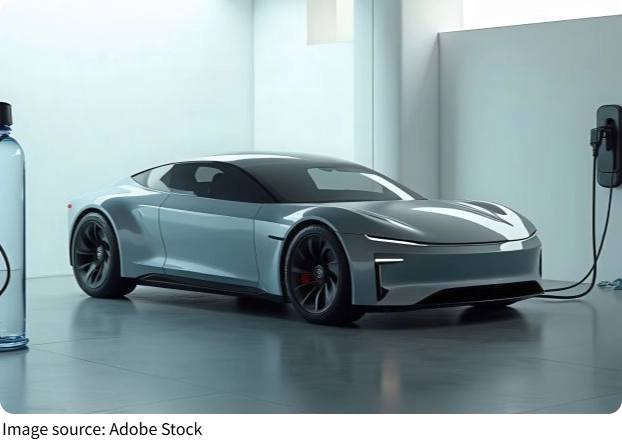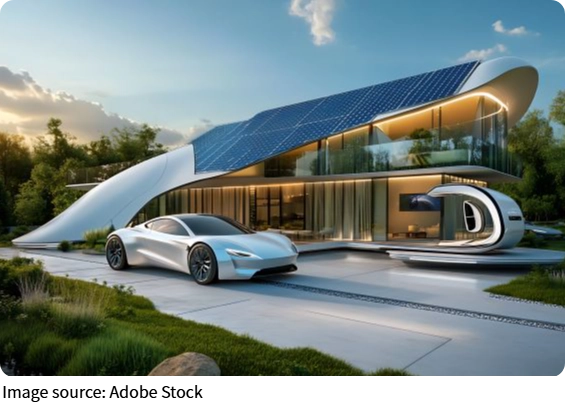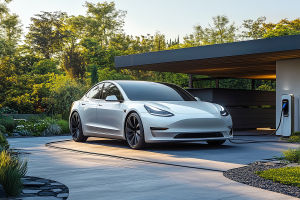EV Growth

We often think of electric vehicles (EVs) as a modern invention, but their story actually began more than a century ago. Back in the late 1800s, inventors built the first practical electric cars using lead-acid batteries.
These early EVs were quiet and clean, which made them stand out compared to the noisy steam engines and smelly gasoline cars of the time. Many people living in cities favored electric cars because they didn't require manual cranking to start, and they didn't produce harmful fumes.
Electric cars were seen as a promising alternative, especially for urban transportation. However, the technology was still very young, and the batteries used were heavy and limited how far these vehicles could travel on a single charge. Still, this period marked the beginning of a long journey for electric vehicles.
Challenges and the Rise of Gasoline Cars
Even though electric cars showed potential, they faced major obstacles. The heavy batteries limited driving range and performance, and charging infrastructure was basically nonexistent outside city centers. The charging process was slow, making it inconvenient for longer trips.
Meanwhile, gasoline-powered cars were improving fast. Henry Ford revolutionized the industry by developing the assembly line, which drastically cut production costs. This made gasoline cars affordable to many people, not just the wealthy. Gas stations began to spread, offering quick refueling that was much faster than charging a battery. These advantages led to gasoline cars dominating the roads by the early 1900s, pushing electric vehicles to the sidelines for decades.
The Hybrid Approach Emerges
Electric vehicle development never completely stopped, though. By the 1930s, engineers began experimenting with combining electric motors and gasoline engines. These early hybrids used gasoline engines to extend range when battery power ran low. While these hybrids didn't become popular immediately, they introduced a new way to address electric vehicles' range and performance issues.
This hybrid technology laid the groundwork for future innovations. It showed how electric and gasoline power could work together, which was a big step forward. However, battery technology still needed to catch up to make fully electric vehicles practical again.

Modern Breakthroughs in Battery Technology
The biggest boost to electric vehicles in recent decades came from advances in battery technology. Lithium-ion batteries replaced older lead-acid types, providing much lighter weight, longer driving range, and faster charging. These improvements made electric cars much more practical and appealing to everyday drivers.
Some companies led this revolution, producing electric vehicles that could compete with gasoline cars on speed, comfort, and range. Suddenly, driving an electric car didn't mean sacrificing convenience. Charging stations also started popping up in more places, making it easier to keep EVs charged on the go.
The Environmental Push and Government Support
Electric vehicles also gained momentum thanks to growing concerns about air pollution and climate change. Governments around the world began supporting cleaner transportation by offering subsidies, tax breaks, and stricter regulations on vehicle emissions. These policies encouraged more people to consider electric cars.
At the same time, the rise of renewable energy sources like solar and wind power made electricity cleaner overall. This means driving an electric vehicle can have a much smaller carbon footprint than traditional gasoline cars. For many, this environmental benefit is a strong motivation to switch to electric.
The Future of Electric Vehicles
Looking ahead, electric vehicles are expected to become even more common. Ongoing innovations in battery chemistry promise to deliver lighter, cheaper, and more efficient power sources. Faster charging technologies are in development, reducing wait times significantly. Recycling methods for batteries are also improving, which will help reduce environmental impact further.
Electric vehicles will likely pair with new technologies like autonomous driving and smart connectivity, creating safer and more efficient transportation systems. With the constant progress, EVs are set to shape the future of how we travel.
We hope this detailed look at the development of electric vehicles gives you a better understanding of how far this technology has come and why it matters so much today. What part of this history surprised you the most? Maybe the early electric cars, or the modern battery breakthroughs? Feel free to share your thoughts—we'd love to hear from you and explore this exciting journey together!
-
 Revolution On WheelsIs This The End Of Gas-Powered Cars? The Future Of Driving Is Closer Than You Think!
Revolution On WheelsIs This The End Of Gas-Powered Cars? The Future Of Driving Is Closer Than You Think! -
 2025 Sports Car ShowdownIs This the Future of Driving? Discover the Top 2025 Sports Cars Now!
2025 Sports Car ShowdownIs This the Future of Driving? Discover the Top 2025 Sports Cars Now! -
 The Future of DrivingRoad Revolution: Why Your Next Car Might Drive Itself—And What That Means for You!
The Future of DrivingRoad Revolution: Why Your Next Car Might Drive Itself—And What That Means for You!